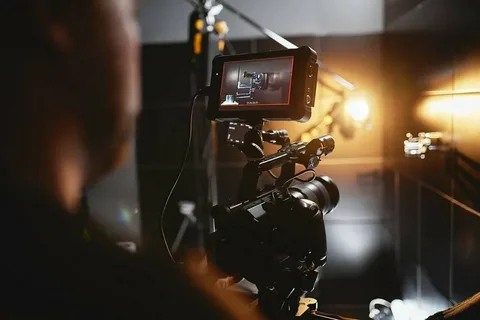Introduction
The film industry has always been at the intersection of art and innovation. From the invention of the camera to today’s digital marvels, technology continues to redefine how stories are told. Modern film production technology has revolutionized the entire filmmaking process — from pre-production and shooting to post-production and distribution.
At the heart of this transformation are tools that enable filmmakers to push creative boundaries like never before. Alongside this evolution, the role of a creative production agency has become more vital, bridging technology and artistry to create visually stunning, emotionally engaging films.
What is Film Production Technology?
Film production technology refers to the use of advanced tools, software, and equipment in the creation of films, television shows, advertisements, and digital content. It covers every stage of filmmaking — pre-production, production, and post-production — to streamline workflows and enhance creativity.
This technology ranges from high-resolution cameras and drones to artificial intelligence and 3D rendering tools. Together, these advancements have made film production faster, more cost-effective, and accessible to creators worldwide.
The Evolution of Film Production Technology
The journey of film technology has been remarkable. A century ago, movies were silent and black-and-white. Today, we have hyper-realistic CGI worlds, virtual production stages, and 8K cameras that capture every detail. Let’s take a quick look at how far we’ve come:
- Early 1900s: Manual cameras, hand-edited film reels, and silent storytelling.
- 1930s–1950s: Introduction of sound, color, and motion picture film.
- 1980s–1990s: Digital editing and computer-generated imagery (CGI) became mainstream.
- 2000s–2020s: The rise of 4K/8K digital cameras, virtual reality (VR), motion capture, and AI-assisted filmmaking.
The evolution continues as film production technology integrates real-time rendering, cloud collaboration, and machine learning to create smarter, faster production pipelines.
Key Technologies Shaping Modern Film Production
1. High-Resolution Digital Cameras
Gone are the days of bulky film reels. Today’s digital cameras, like the RED Komodo or ARRI Alexa, deliver cinema-grade visuals in compact formats. They allow filmmakers to shoot in ultra-high definition with incredible color accuracy, reducing the need for reshoots.
2. Drone Cinematography
Drones have revolutionized aerial cinematography. They provide stunning overhead shots at a fraction of the traditional helicopter cost, offering creative angles that enhance storytelling.
3. Virtual Production & LED Walls
Popularized by shows like The Mandalorian, virtual production combines real-time 3D environments projected on massive LED screens. It allows actors to perform in immersive settings without the need for physical travel or green screens.
4. Artificial Intelligence (AI) and Machine Learning
AI is transforming editing, script analysis, and even casting decisions. Tools can now automatically edit scenes, color grade footage, and predict audience engagement — saving time and improving creative precision.
5. 3D Animation and CGI
Computer-generated imagery has unlocked unlimited creative potential. From fantastical worlds to lifelike creatures, CGI enables filmmakers to tell stories that were once impossible to visualize.
6. Cloud Collaboration Tools
Platforms like Frame.io and Adobe Cloud allow global teams to collaborate seamlessly. Directors, editors, and producers can review footage and make real-time decisions from anywhere in the world.
The Role of a Creative Production Agency
A creative production agency plays a crucial role in bringing technology and artistry together. These agencies handle everything from concept development to final delivery, ensuring that every element of production aligns with the client’s vision.
They don’t just use film production technology — they master it. By combining strategic creativity with cutting-edge tools, they help brands, filmmakers, and organizations tell their stories more effectively.
Key Functions of a Creative Production Agency
- Concept Development: Crafting original and engaging storylines.
- Pre-Production Planning: Managing casting, location scouting, and budgeting.
- Filming & Direction: Using advanced cameras, lighting, and equipment.
- Post-Production: Editing, visual effects, and sound design.
- Distribution: Ensuring the final product reaches the right platforms and audiences.
A reputable creative production agency stays ahead of trends — adopting new technologies, maintaining high creative standards, and ensuring seamless coordination throughout production.
How Technology Empowers Creative Production Agencies
The collaboration between technology and creativity is what makes modern film production so exciting. Here’s how technology empowers agencies to deliver better results:
- Efficiency: Automated editing and AI-driven workflows save time.
- Quality: Advanced cameras and software ensure professional-grade visuals.
- Creativity: Tools like motion capture and VR expand storytelling possibilities.
- Cost Savings: Digital sets and LED screens reduce expensive location shoots.
- Accessibility: Cloud-based tools allow collaboration from anywhere in the world.
In short, film production technology amplifies creativity — enabling creative production agencies to achieve cinematic excellence even with tighter timelines and budgets.
Future Trends in Film Production Technology
The next wave of innovation promises even greater possibilities. Some exciting future trends include:
- Virtual Reality (VR) Storytelling: Immersive experiences where audiences become part of the story.
- AI-Assisted Scriptwriting: Machine learning tools that analyze audience data to craft engaging scripts.
- Real-Time Rendering: Faster post-production using game engine technology like Unreal Engine.
- Sustainable Production: Eco-friendly technology to reduce carbon footprint during shoots.
- Interactive Films: Personalized, branching narratives where viewers control the storyline.
These advancements show that the future of film production technology isn’t just about better visuals — it’s about deeper engagement, smarter processes, and limitless imagination.
Choosing the Right Creative Production Agency
If you’re planning a film, commercial, or brand video, choosing the right creative production agency is crucial. Here’s what to look for:
- Portfolio Quality: Check the agency’s previous work to gauge its creativity and production value.
- Technical Expertise: Ensure they use the latest tools and technologies.
- Collaborative Approach: Look for open communication and flexibility.
- Innovative Mindset: Agencies that embrace new trends deliver more memorable results.
- Client Testimonials: Feedback from past clients reveals their reliability and professionalism.
Working with a tech-savvy creative agency ensures your project stands out in today’s competitive visual landscape.
Conclusion
The film industry is in the midst of a technological revolution. From pre-production planning to post-production editing, film production technology has reshaped every stage of the process. Meanwhile, creative production agencies are using these tools to blend innovation with storytelling — turning ideas into cinematic masterpieces.
Whether you’re an aspiring filmmaker or a brand looking to create impact, embracing technology and partnering with the right creative agency can take your vision to the next level. The future of filmmaking is bright, digital, and more creative than ever before.

